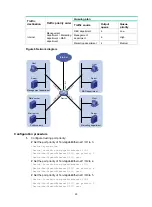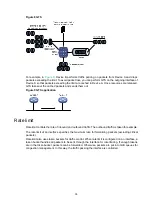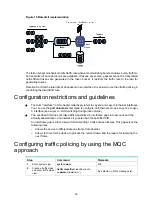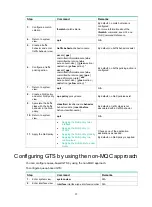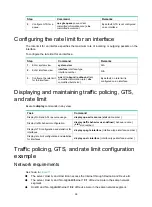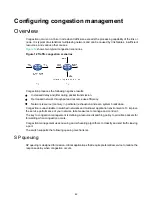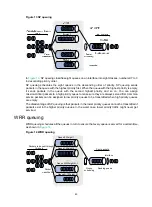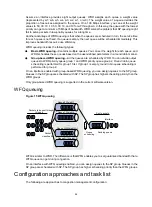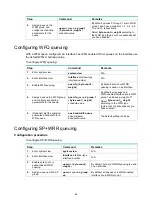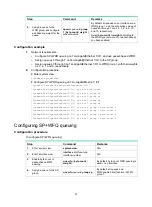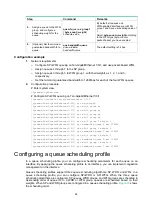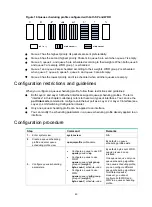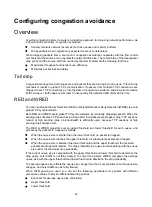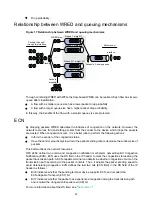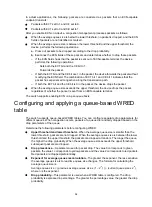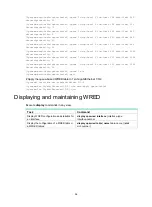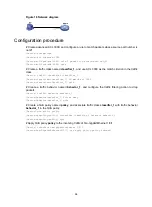
43
Figure 13 SP queuing
, SP queuing classifies eight queues on an interface into eight classes, numbered 7 to 0
in descending priority order.
SP queuing schedules the eight queues in the descending order of priority. SP queuing sends
packets in the queue with the highest priority first. When the queue with the highest priority is empty,
it sends packets in the queue with the second highest priority, and so on. You can assign
mission-critical packets to a high priority queue to make sure they are always served first. Common
service packets can be assigned to low priority queues to be transmitted when high priority queues
are empty.
The disadvantage of SP queuing is that packets in the lower priority queues cannot be transmitted if
packets exist in the higher priority queues. In the worst case, lower priority traffic might never get
serviced.
WRR queuing
WRR queuing schedules all the queues in turn to ensure that every queue is served for a certain time,
as shown in
Figure 14 WRR queuing
Queue 0 Weight 1
……
Queue 1 Weight 2
Queue N-2 Weight N-1
Queue N-1 Weight N
Packets to be sent through
this port
Sent packets
Interface
Queue
scheduling
Sending queue
Packet
classification
Summary of Contents for FlexFabric 5940 Series
Page 23: ...17 Figure 3 QoS processing flow ...
Page 84: ...78 Figure 26 MPLS label structure ...
Page 91: ...85 Switch burst mode enable ...

